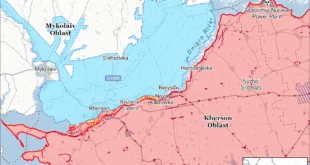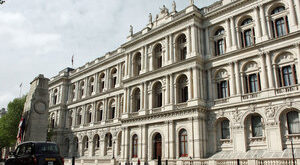Dozens of pits and ravines and in mountainous Bosnia and Herzegovina were used to hide bodies of massacre victims and conceal crimes from outsiders during the 1992-95 war – as they were also used during World War II.
In mid-June 1992, as the war in Bosnia and Herzegovina began in earnest, Bosniak civilians in the town of Visegrad boarded buses in a convoy organised by the local Red Cross. Forced out of their homes by the Bosnian Serb army, they were told that they would be transported to territory controlled by the Bosnian government, where they would be safe.
Several buses, carrying almost 500 civilians in total, passed through the town and headed towards Sarajevo. The Bosniak civilians, who were of all ages, male and female, accepted the offer of transport because it had been organised by their Serb neighbours, who they trusted.
The buses stopped in the town of Sokolac. The Serb soldiers accompanying the convoy started to divide the men from the women. The men, 49 of them, were placed on another bus, whilst the others continued towards Bosnian government-controlled areas.
The men were tied to each other in pairs, their hands bound with wire, and taken into a forest in front of a ravine. Serb soldiers, mainly from Visegrad, started ordering the men, two at time, to the edge of the ravine, where they were shot and fell into the ravine as the next victims looked on.
Too shocked to understand what was happening to them, the victims acted robotically. Their executioners were their former high school classmates, co-workers and friends.
Ferid Spahic, being the last of the captives, the 49th victim in line for execution – an odd number – was not tied to anyone else.
At some point during the massacre, Spahic realised that he could try and escape, since he was not bound to anyone. He used a moment when the guards were not looking and started to run.
The guards fired shots in his direction. The bullets missed him, but Spahic tripped and fell as if hit. The guards thought they had shot him, and left him to lie on the ground.
For the next few hours, Spahic played dead, listening to the executions happening a few hundred metres behind him. The soldiers drank beer, laughed and joked, and to finish everything off, tossed hand grenades into the ravine.
Spahic waited for nightfall and then continued through the forest, searching for help with his hands still bound. He hurried through the woods for a few hours until he came across a Bosniak village where an elderly woman took care of him and from there he managed to get to Bosnian government-held territory.
The usage of the many deep pits and ravines across Bosnia and Herzegovina as places of execution, burial and ultimately concealment is not unique to this tragic incident. In this mountainous country, these natural phenomena are plentiful, and the opportunities to use them have sadly been frequent. However, their use as mass grave sites is under-researched.
Crimes of the past
During the 1990s war, it is estimated that at least 35 pits and ravines were used to conceal massacres. Sites such as the pit in Hrastova Glavica, where there was a massacre on August 5, 1992. The remains of 121 victims were identified; 119 of them came from the Keraterm and Omarska detention camps.
Similar stories can be told from pits throughout the country in places such as Radaca, Lisac and Golubnjaca. Details about these places can be found on BIRN’s Bitter Land database of mass graves.
But hiding bodies in pits and ravines was not unique to this most recent war. During World War II, they were also used to conceal massacres committed against civilians. This was particularly the case with the WWII Croatian Nazi-allied force, the Ustasa, who made extensive ‘use’ of pits high in the karst mountains above the Croatian coast and in the Herzegovina region.
Survivor Slavko Goldstein, a journalist and member of the Yugoslav Partisans, recounts in his book, 1941: The Year That Keeps Returning, how the Ustasa filled these pits with human remains and simply left them to rot. One cave was estimated by the Italians to hold the remains of over 2,000 people, mainly Serbs and Jews of all ages and sexes.
One witness quoted in Goldstein’s book noted how the victims were led to the edge of the pit in twos, bound together by wire.
The World War II crimes against the Serbs contributed to creating an ideology which served as a mobilising factor for nationalists in 1990. Aside from other factors, Serb nationalists came to power on the back of a toxic reanimation of the fears and grievances created by the perceived impunity for World War II crimes.
They also had never had the chance to rebury their dead. One of the leading initiatives by Serb political and religious leaders during the 1980s was to exhume the skeletal remains of victims from ravines throughout Croatia and Bosnia and Herzegovina.
The most notable example was the 1990 exhumation of the Golubinka pit near the village of Surmanci, in western Herzegovina, wherein some 500 Serbs, mostly women and children, were killed by the Ustasa.
Locations kept secret
There is something to learn from the usage of caves, pits and ravines as massacre sites. Firstly, it shows a desire to hide the crime, thus suggesting a certain sense of guilt or at least, a desire to prevent discovery.
Secondly, most of the pits mentioned here are small and only locally known. Ferid Spahic’s captors were locals, and knew both their victims and the best places to hide their bodies.
It was only Spahic’s survival that led to the discovery of the mass grave. The close relationships between members of groups that committed such crimes usually meant that the sites were very difficult to uncover, as these secrets were rarely shared.
Therefore in most cases, the sites were mainly discovered due to the fact that someone managed to either survive or witness the executions from a near distance. As such a long time has now passed since the end of the war, many of the sites that have been discovered in recent years were found because of due to investigative work and insider knowledge from members of the organised criminal group that was responsible for the killings.
The pit from which Spahic managed to escape is called Paklenik. The etymology of the word suggests a connection to the word for ‘hell’ (pakao) in the Bosnian, Croatian and Serbian languages. Spahic’s testimony confirms the aptness of the site’s name for the crime that took place there. It was the final destination for dozens of husbands, fathers, brothers and sons. Some victims who weren’t killed immediately by the bullets lay on the cold stone and bled out in the hours to come.
WWII partisan and poet, the Croat Ivan Goran Kovacic, penned his most famous work ‘Jama’ (‘Pit’) in response to the Ustasa’s massacres of Jews, Serbs, Roma and others at pits in the area around Jadovno and Glina in WWII. Kovacic was killed by Serb nationalist Chetniks in 1943.
His poem’s gruesome first-person depiction of experiencing an Ustasa massacre, being thrown into a pit with the dead and then subsequently fighting his way up and out through the bodies, is possibly one of the only ways that people can start to even begin to comprehend what massacre survivors like Spahic suffered.
 Eurasia Press & News
Eurasia Press & News




